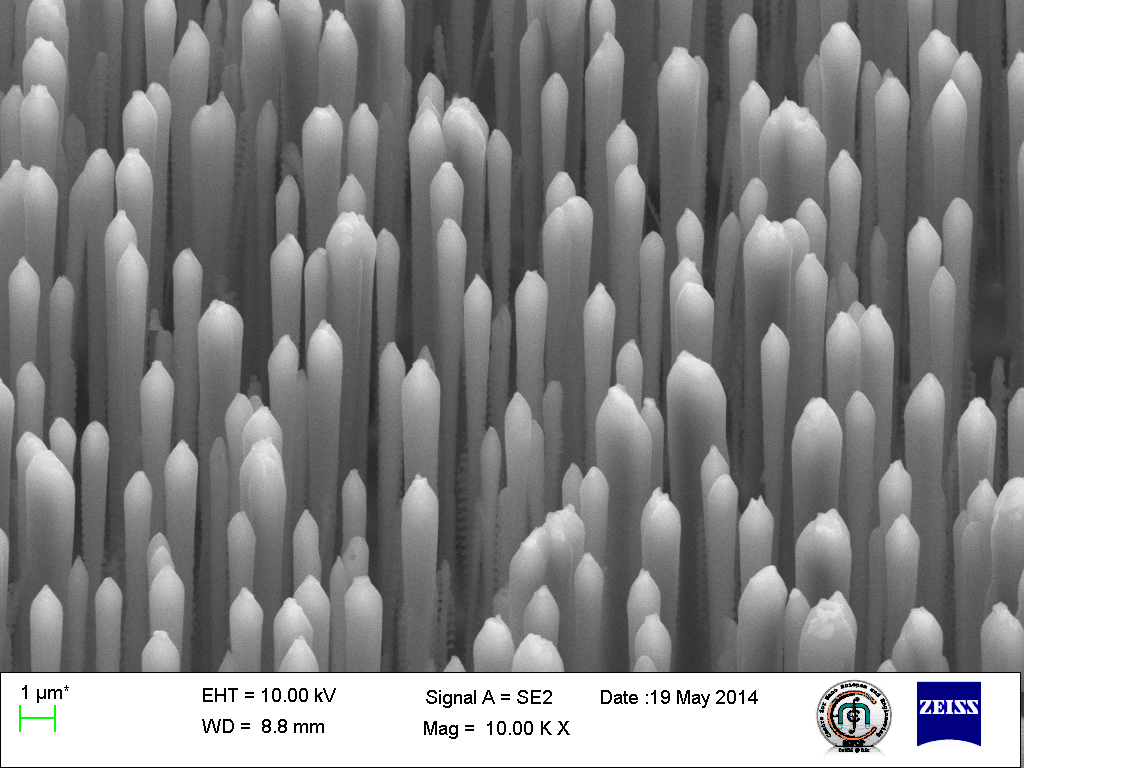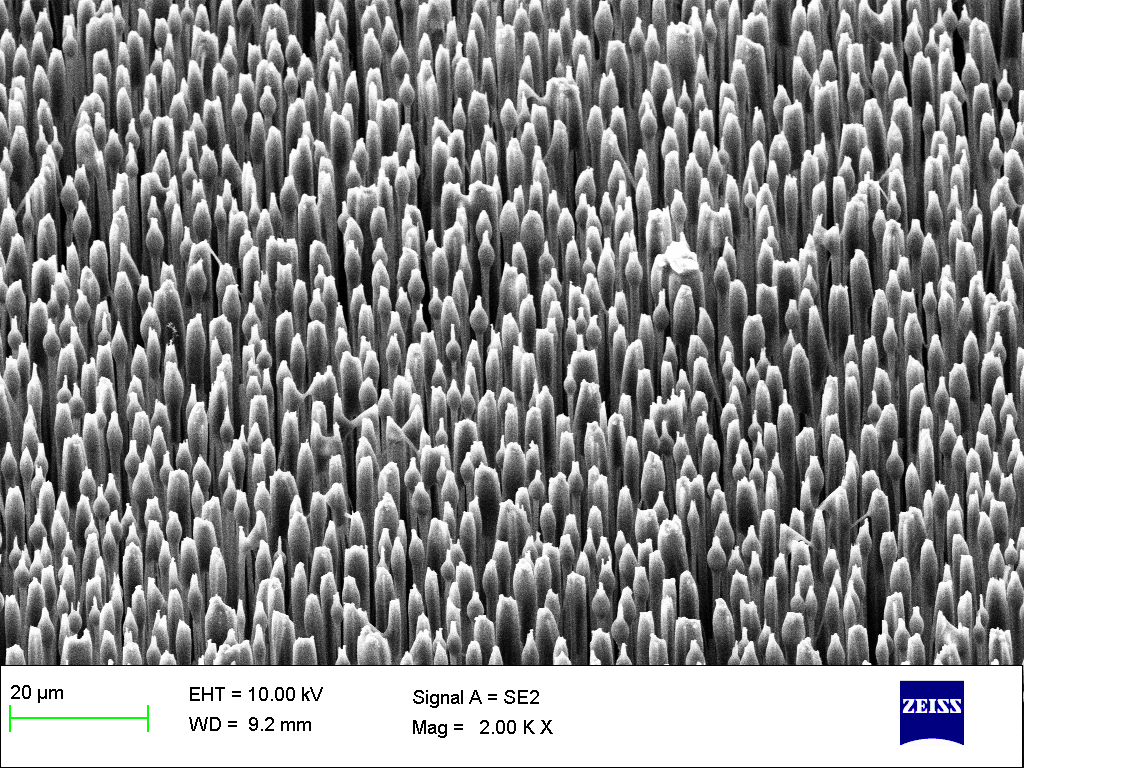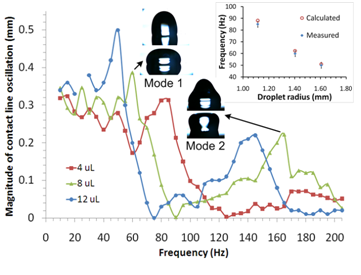Self-Cleaning Super-Hydrophobic Surfaces: Nano-structuring for modification of surface properties is one of the most interesting topics that is currently being pursued by the group led by Prof. Prosenjit Sen. Specific nano/micro-structuring can lead extreme water repellency and are commonly known as super-hydrophobic surfaces. In nature, many plants and insects, such as Lotus leaves and Cicada wings show superhydrophobic behaviour. This is because, they have wax coated micro/nano hierarchical structures on their surfaces. Superhydrophobic surfaces also show low drag for fluid flow due to reduced liquid-solid contact area. The Micro-Nanofluidics lab has developed a simple, one step process for fabrication of large area water repellent surfaces. Such super hydrophobic surfaces can potentially lead to underwater jackets with entrapped air for breathing inside water, and clothes that do not stain.


Figure: SEM image of Nanostructures
Dynamics of Liquid Interfaces
Fluid interfaces are known to show interesting hydro-dynamical effects. A significant focus of the Micro-Nanofluidics group is to study the dynamics of water droplets actuated by electrostatic forces. Manipulation of micro-droplets using electrostatic forces opens up the possibility of portable point-of-care micro total analysis systems by eliminating the requirement of external pumps in microfluidic systems. Various oscillation modes of a droplet and the actuation conditions required to achieve the actuations are studied experimentally. The understanding developed will lead to variety of interesting applications in bio-sensing, bio-analytical assay operations like mixing, liquid based mechanical switching, liquid lenses etc.

|
Associate Professor |